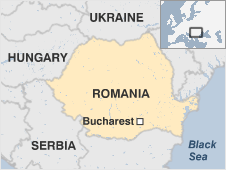Romania
Location: Southeast Europe, on the coast of the Black Sea, borders with the Republic of Moldova, Ukraine, Hungary, Serbia and Bulgaria
Area: 238,391 sq km
Population: 19,942,000 (March 2014)
Official language: Romanian
Capital: Bucharest
Government type: Republic
Name “Romania” comes from the Latin word “Romanus” which means “citizen of the Roman Empire”. Romanian people were under numerous empires, like the Roman, Ottoman and the Austro-Hungarian.
Independence: 9 May 1877 proclaimed from the Ottoman Empire and recognized on 13 July 1878 by the Treaty of Berlin.
National holiday: 1 December (1918) – Unification Day (of Romania and Transylvania)
After the World War II Romania was under communist rule. Nevertheless, its leadership tried to keep the foreign policy independent of Soviet Union. Romania underwent several changes in territory. The most notorious when the area formerly known as Bessarabia went to the USSR following Molotov – Ribbentrop pact. Nowadays that region largely constitutes the Republic of Moldova.
Member of NATO since 29 March 2004
Member of the European Union since 1 January 2007
Climate: winters – cold, snowy and foggy, summers – sunny and hot (>30 degrees Celsius)
Internet domain: .ro
International dialing code: +40

